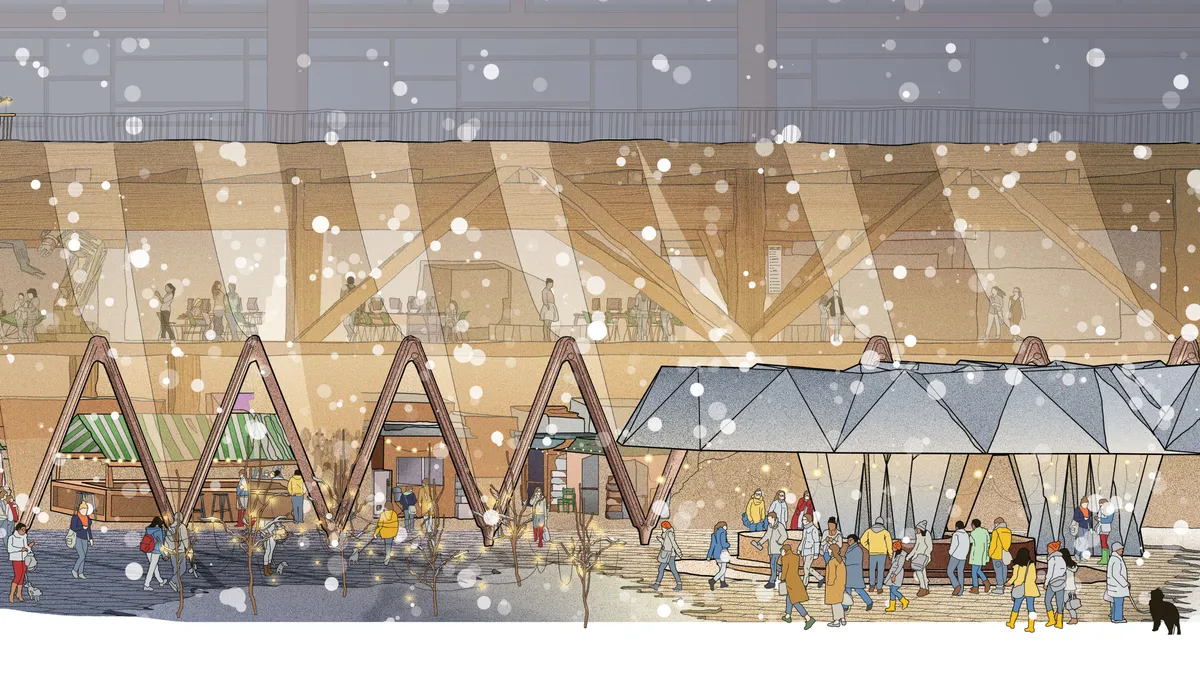Dive Brief:
- Sidewalk Labs gave a public demonstration of some of the technology it will install in its planned waterfront smart city development in Toronto, including an adjustable awning that will extend from buildings in the event of rain and snow. The “building raincoat” attaches to buildings and anchors in street pavement.
- At the Saturday demonstration, Sidewalk Labs also revealed its dynamic, modular pavement plan, which uses hexagonal pieces with LED lights that will change colors to signal changes in street use. As another adaptation to Toronto’s weather, the concrete modules will also be heated to clear ice and snow, and permeable to absorb stormwater or melting snow.
- The Quayside development will also have public art designed to “reflect on relationships between humans and animals in public space, and the broader connection of ecology and urbanism,” according to Sidewalk Labs.
Dive Insight:
After years of planning, Alphabet’s Sidewalk Labs has become more forthcoming with details of the 12-acre Quayside development, which is meant to be a model for smart city technology. The public demonstration comes after a slide deck showed off other details of the project, like plans for a network of underground tunnels to handle waste and deliveries, and environmentally-friendly design that will see all buildings be made of timber.
The modular pavement will be especially innovative, allowing streets to turn to pedestrian space, and vice versa, based on needs (there could be more driving lanes during rush hour, for instance). The hexagonal pieces can also be swapped out easily, reducing the need for extensive road work. But most of the weekend’s public demonstration focused on how the development will be weather-proofed.
Jesse Shapins, the director of public realm at Sidewalk Labs, said that weather on Toronto’s waterfront is only “comfortable” 30% of the year, according to a report in the Financial Post, meaning the retractable “raincoats” will help keep the city functioning and friendly to pedestrians year-round. Combined with heated pavement, the awnings could keep sidewalks and bike lanes open year-round, and extend outdoor opportunities for restaurants and markets.
The cost, Shapins said, is still up in the air, but he said they would be “comparatively less” than building a glass walkway.
The demonstrations also have the benefit of generating excitement for the project, which has been beset by concerns about privacy and data security. Although a recent survey showed majority support for the project among Toronto residents, there has still been a vocal drumbeat of opposition, including the #BlockSidewalk online campaign.
In an interview with the Toronto Star, Mohsin Bin Latheef, an engineer from the waterfront area, said the demonstration gave him more confidence in the development. “I like the fact that they’re willing to be transparent — they’re putting more and more ideas out there, knowing fairly well they will be criticized,” he said.










